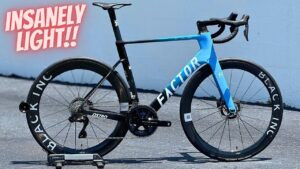The Bicycle industry is in BIG TROUBLE!! (EVERYONE HAS TOO MUCH INVENTORY!) with GC Performance
Video The Bicycle industry is in BIG TROUBLE!! (EVERYONE HAS TOO MUCH INVENTORY!) with GC Performance
Video The Bicycle industry is in BIG TROUBLE!! (EVERYONE HAS TOO MUCH INVENTORY!) with GC Performance YouTube Channel.
The Bicycle industry is in BIG TROUBLE!! (EVERYONE HAS TOO MUCH INVENTORY!)
The Bicycle Industry: Challenges and Opportunities
The bicycle industry is facing some major challenges, with big-name companies signaling financial difficulties and even the possibility of bankruptcy. In this article, we’ll explore the current state of the industry, from the perspective of a retail store owner.
The Slow Season: A Retailer’s Perspective
As a retail store owner in Florida, the past two to three months have been incredibly tough. Contrary to popular belief, this time of year is slow for bike sales in the state. The scorching heat keeps people indoors, and the absence of snowbirds and tourists further impacts sales.
During this slow season, walk-in traffic has been minimal, and the need for service work has diminished. Despite efforts to boost sales through email blasts and promotions, the store struggled to generate revenue. This slowdown was not limited to our store alone; other retailers and vendors in the industry have also faced similar challenges.
The Impact of E-Commerce Woes
The challenges faced by individual retailers pale in comparison to the financial woes experienced by major e-commerce giants such as Wiggle and Chain Reaction. These companies have announced substantial losses, with the withdrawal of a $150 million funding commitment by their parent company.
The bicycle industry’s current predicament is not exclusive to retail and e-commerce. The overarching economic and political climate has also contributed to the difficulties faced by the industry, including increased operation costs and a reduction in disposable income.
Overstocking and Competitive Pressure
The overstocking of bicycles and components has created a race to the bottom, with companies vying to clear their inventories and cover their financial obligations. As a retailer, I have witnessed this firsthand, as customers seek price matches and competitive deals from retail and e-commerce outlets.
The Used Bicycle Market
In addition to the pressures from e-commerce and overstocking, retailers are also contending with a robust and competitive used bicycle market. High-end bikes and components are being sold by individuals and certified pre-owned bicycle companies at competitive prices, further intensifying the market’s competitive landscape.
The Shift in Consumer Behavior
Consumer behavior has also shifted significantly. The demand for entry-level mountain bikes and hybrid models has dramatically decreased, reflecting a change in consumer preferences and spending habits. This decline can be attributed to the aftermath of the pandemic, where a surge in bicycle purchases has now given way to a saturated market and reduced consumer interest.
The Future: Navigating Challenges and Capitalizing on Opportunities
Amidst these challenges, high-end bicycles and accessories remain a bright spot for retailers. Customers who can afford to splurge are gravitating towards premium models and upgrades, providing a lifeline for businesses amidst the industry’s turmoil.
Despite the current climate, retailers are pushing through, adapting their strategies to align with changing consumer preferences and economic conditions. The emphasis on high-end products, alongside targeted marketing efforts and a focus on exceptional customer service, continues to be crucial for sustaining and growing a business in the bicycle industry.
Conclusion
In conclusion, the bicycle industry is navigating through turbulent waters, grappling with e-commerce struggles, overstocking, and shifting consumer behaviors. However, there are still opportunities for growth and success, particularly in the high-end segment. Retailers are resilient and are adapting their approaches to thrive in a challenging market environment.
As we move forward, it’s essential for businesses in the bicycle industry to remain agile, innovative, and customer-focused. By staying attuned to market trends, and aligning with consumer needs, retailers can continue to weather the storm and emerge stronger in the post-pandemic landscape.
The opinions expressed in this space are the sole responsibility of the YouTube Channel GC Performance and do not necessarily represent the views of CicloNews.










